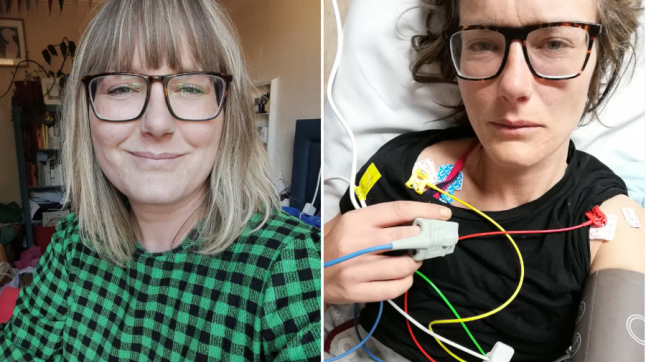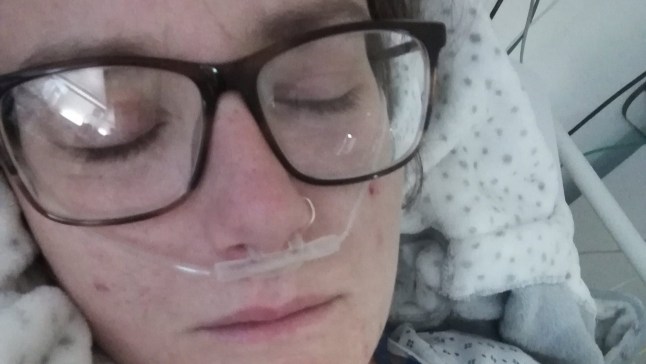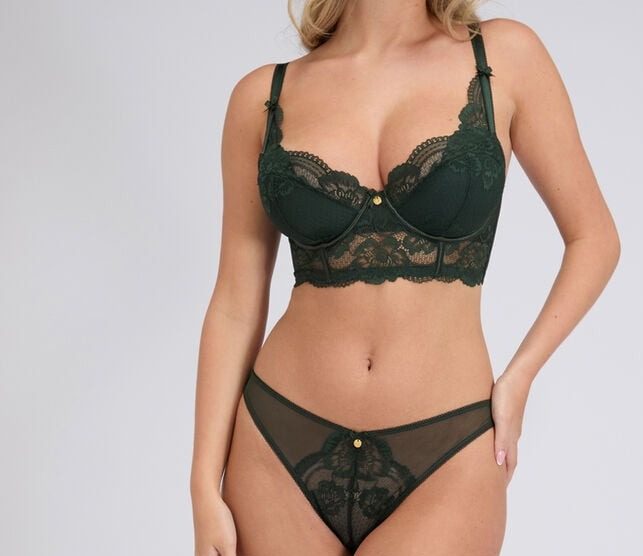5 Nov, 2025 | Admin | No Comments
Boux Avenue’s Free Knicker offer is back -and it’s too good to miss

Metro journalists select and curate the products that feature on our site. If you make a purchase via links on this page we will earn commission – learn more
If you’ve been waiting for an excuse to upgrade your lingerie drawer, consider this your sign.
Boux Avenue’s most-loved offer is officially back – and yes, it’s set to have your sad, old underwear running for the hills. It is, of course, the Free Knicker offer, and it could save you up to a whopping £18 on every bra you buy.
From now until 15 November, when you buy any eligible Boux Avenue bra, you’ll get the matching knickers completely free.
Whether you prefer a brief or a thong, this unmissable deal makes grabbing some stunning new matching underwear in time for the festive season far more affordable.
With so many styles to choose from – including balconette, plunge, padded and unpadded, and even corset designs, there’s never been a better excuse to treat yourself to a luxurious matching set (because honestly, who doesn’t love a little lingerie upgrade?).
All you have to do is add an eligible bra and the matching knickers of your choice to your basket and the saving will appear – it’s really that easy.
One style we’re totally besotted by is the Wren lace longline bra in Bottle Green, which boasts soft, luxurious lace detailing and sculpting lines – a true showstopper for any occasion.
Complete with your choice of thong or brief, this duo will set you back just £45 rather than £61 – a savvy saving if ever we’ve seen one.
Ready to shop the deal? Explore our top picks from eligible bras in the Boux Avenue Free Knicker offer below.
Shop the Boux Avenue offer
There’s truly never been a better time for an underwear upgrade.
Follow Metro across our social channels, on Facebook, Twitter and Instagram
Share your views in the comments below
5 Nov, 2025 | Admin | No Comments
Princess Kate's 'Ralph Lauren Christmas' outfits are a lesson on festive fashion

The Princess of Wales often wears tartan clothes in the winter in shades of green, red, and blue. The ‘Ralph Lauren Christmas’ aesthetic is trending on TikTok and Instagram, and Prince William’s wife has been dressing this way for years.
5 Nov, 2025 | Admin | No Comments
Queen Letizia puts glamorous silver curls on full display with 139-year-old Cartier tiara

Queen Letizia put her glamorous silver curls on full display with the 139-year-old Queen Maria Christina’s Cartier Loop tiara at the gala dinner for Haitham Bin Tariq, the sultan and prime minister of Oman, at the Royal Palace in Spain.
5 Nov, 2025 | Admin | No Comments
How tonight's Beaver Moon could have unexpected affect on your relationship

The full moon has long been blamed for strange behaviour, from erratic moods to sleepless nights, but could this week’s Super Beaver Moon also cause drama in your relationship?
4 Nov, 2025 | Admin | No Comments
Exclusive: Frankenstein costume designer on 'fever dream' film – and 'dedicated' Jacob Elordi

Costume designer Kate Hawley on Guillermo del Toro’s Frankenstein tells HELLO! about creating outfits for Mia Goth, Jacob Elordi and Oscar Isaac
4 Nov, 2025 | Admin | No Comments
Harper Beckham gives ballet pumps a winter twist as dad Sir David receives knighthood

Harper Beckham was the picture of a doting daughter as she supported her father, Sir David Beckham, at his knighthood investiture at Windsor Castle alongside mum Victoria, and brothers Romeo and Cruz.
4 Nov, 2025 | Admin | No Comments
Victoria Beckham side-steps the limelight in waist-cinching dress for King Charles audience

Victoria Beckham oozed chic in a waist-cinching maxi dress for David Beckham’s long-awaited knighthood ceremony on Tuesday 4 November.
HELLO!’s shopping team love H&M’s Toteme lookalike faux shearling jackets. Shop the affordable designer lookalike coats for just £37/$59.99 and £74.99/$119.99.
4 Nov, 2025 | Admin | No Comments
I’ve survived deadly sepsis six times — one symptom always raises the alarm


‘I woke up one morning with what felt like a really badly sprained back,’remembers Amani, recalling her first encounter with sepsis in 2020.
‘I thought I’d somehow pulled a muscle, but I also felt quite delirious and unusually unwell.’
The 37-year-old, from Bristol, has since survived the life-threatening condition six times, each caused by a urinary tract infection (UTI).
She didn’t immediately sound the alarm on that first February morning, having suffered from chronic illness since a water sports accident that impacted her bladder in 2011.
She took her temperature and noted it was 40°C, but, not wanting to cause a fuss, she resisted calling NHS 111 for a further two days.
The call operator immidiately sent an ambulance to her flat, ignoring her protests that she didn’t need one.
‘Unfortunately, when you live with severe chronic illness, you are used to living with such extreme and completely debilitating symptoms every day, so I pushed through my intense and scary symptoms for a couple of days,’ she says.
‘I remember feeling like something really bad was about to happen – an impending sense of doom – which I later learnt was actually a symptom of sepsis and has been a symptom of it every time I have had sepsis since.’

Amani’s experience with chronic illness began in her twenties, when she was working as a coasteering instructor in 2011.
The sport involves cliff jumping and sea swimming, but an accident left her with Cauda Equina (a condition impacting the nerves in the lower spine), and subsequent neurogenic bladder, where she struggled to pass urine and had to use catheters.
When Amani first got sepsis in 2020, she was intermittently self-catheterising up to 30 times a day, which greatly increases the risk of UTIs.
Approximately 30% of all sepsis cases are due to urosepsis, a medical emergency where an infection of the urinary tract spreads to the bloodstream.
‘When I was then taken into resus at the nearest hospital, they told me if I had actually denied the ambulance, I would have died in my sleep,’ she says.
‘I was only two hours away from dying when I got to them.’
Amani was treated with IV antibiotics, fluids, and pain relief.
She was also given IV fluid to help her kidneys function properly again, but her lungs took on fluid and she became really unwell from that, too.
‘I don’t remember much of the hours and days that followed, because I was so unwell,’ Amani says. ‘Eventually, after a few weeks of being in hospital, I was discharged home.’

Each time she’s had sepsis, the transition of coming home has been ‘really hard’ for Amani, who lives alone.
‘From my experience of surviving sepsis, and that of the many people I have connected with that have also survived sepsis, it can leave a lot to process in its wake and after you have survived it,’ she says.
‘Once you are home, ‘normal life’ continues around you, yet you nearly died and have so many emotions to process. It can feel incredibly isolating.’
An extra challenge for Amani is that despite being a repeat sufferer of sepsis, she often has to spot symptoms presenting differently.
‘This is important, because sepsis can be so sneaky and can develop so quickly – for example my fourth time of having sepsis, in 2024, I had been admitted to hospital for a kidney infection.
‘When I arrived, I was only mildly unwell, so they kept me in the corridor for observation and to await treatment, but within an hour I developed a 40°C temperature and started vomiting, and passing out.
‘I had suddenly become seriously unwell, and was rushed through to receive IV antibiotics, with sepsis again.’
Repeat cases haven’t made sepsis any easier. In fact, Amani says she’s ‘got more scared’ with each diagnosis, because she understands how bad the condition can get, and how dangerous it is.

The writer and artist now works with the charity Sepsis Research FEAT, helping raise awareness for the work and research they do, as well as the general signs of Sepsis.
Although her own symptoms have always varied slightly, they have included a high or low temperature, vomiting and severe nausea, confusion and feeling delirious, an impending sense of doom, chills and shivering, feeling very systemically unwell, shaking uncontrollably, shortness of breath or breathing faster than usual, a rapid heart rate; feeling exhausted and sleeping too much or being unable to rouse properly.
Symptoms of sepsis
The common symptoms of sepsis in adults are:
- A very high or low body temperature
- Uncontrollable shivering
- Confusion or disorientation
- Passing less urine than normal
- Blotchy or cold arms and legs
Other symptoms may include:
- Mottled or discoloured skin
- Fast, or difficulty in, breathing
- Rapid heartbeat
- Extreme pain or discomfort
- Feeling dizzy or faint
- Feeling of doom or that you may die
Source: Sepsis Research FEAT
She now also suffers with Post-Sepsis Syndrome (PSS) which leaves her with ongoing physical, mental, cognitive, and emotional challenges. Around 40% of people who have had sepsis live with PSS, often lasting for months or years.
‘It is also really important to remember that sepsis does not discriminate – even if you are not at a higher risk of sepsis like I am, anybody can get sepsis, so it is essential to know the signs and symptoms. It can literally save a life,’ says Amani.
My biggest advice to anyone wondering if they have sepsis is that you know your body better than anybody, so listen to how you feel, and trust your instincts, because it literally can save your life.’
4 Nov, 2025 | Admin | No Comments
Queen Máxima surprises in shoulder-baring fuzzy top – before swapping to full leather look

Queen Máxima of the Netherlands opted for a fuzzy orange top as she stepped out to visit Haarlem College with Judith Tielen, the Secretary of State for Youth, Prevention and Sport, to talk about what Haarlem is doing to make young people feel better in their skin.











